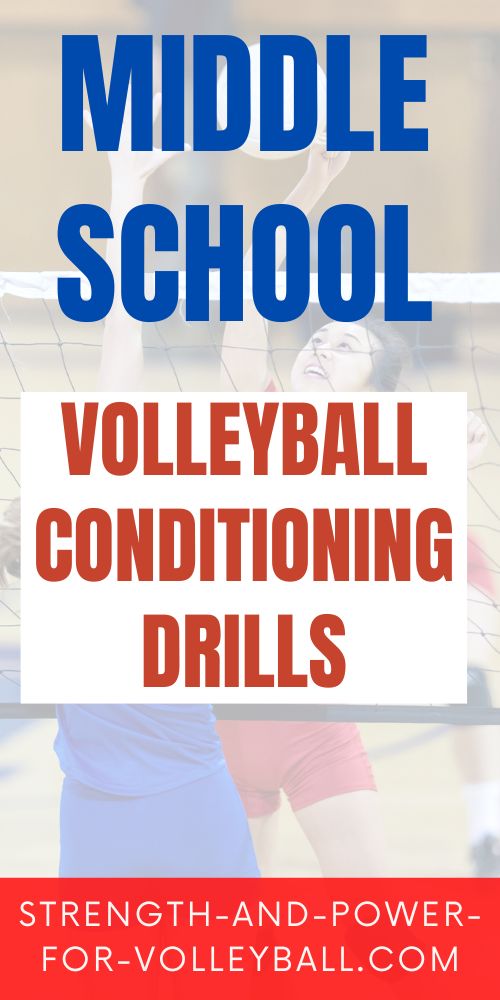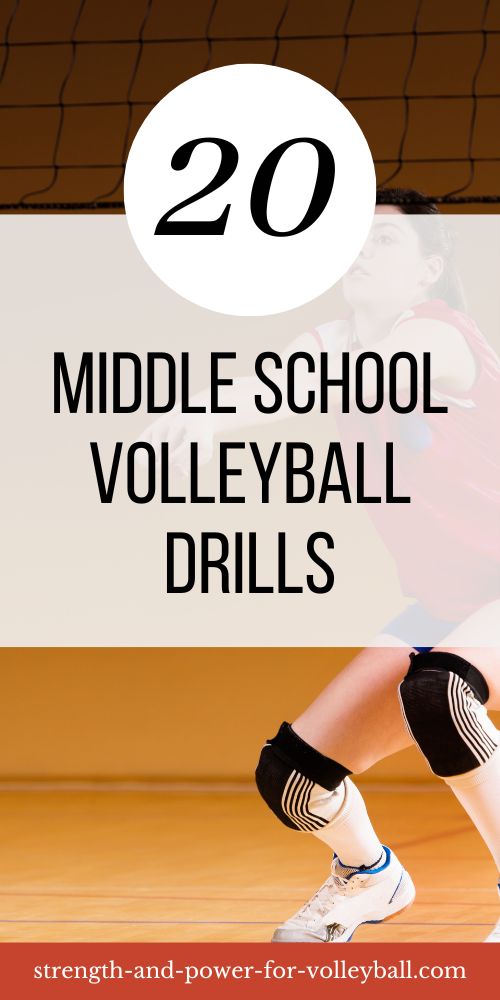Volleyball Drills for Middle School
Volleyball Drills for Middle School Focusing on Skills Training
Here are 20 volleyball drills for middle school that focus on training volleyball skills.
Bump or pass and catch: Players partner up and pass or bump the ball back and forth, catching the ball after each pass.
Serve and receive: One player serves, and the other receives and passes the ball back.
Pepper: Two players bump, set, and spike the ball back and forth to each other.
Wall passing: Players stand facing a wall and pass the ball to each other.
Overhand passing: Players practice passing the ball using overhand technique, focusing on hand position and accuracy.
Underhand serving: Players practice serving the ball using underhand technique, focusing on proper form and direction.
Line passing: Players stand in a line and pass the ball down the line, alternating between bump and set.
Hitting lines: Players practice hitting the ball from hitting lines, focusing on footwork and timing.
Setting to a target: Players set the ball to a designated target, focusing on accuracy and technique.
Serving accuracy: Players practice serving the ball to specific targets on the court, focusing on accuracy and control.
Digging: Players practice digging the ball, with a focus on proper footwork and technique.
Roll passing: Players practice rolling the ball to each other, focusing on proper technique and hand position.
Block jumps: Players practice blocking jumps, focusing on proper footwork and timing.
Quick sets: Players practice quick sets, focusing on footwork and timing.
One-handed passing: Players practice passing the ball using only one hand, focusing on hand position and control.
Defensive drills: Players practice defensive drills, such as diving and rolling, to improve their defensive skills.
Communication drills: Players practice communication drills, such as calling the ball and communicating on the court, to improve teamwork.
Scrimmages: Players participate in 6 vs. 6 scrimmages to practice game-like situations and teamwork.
Serving and passing relays: Players participate in relays, with one player serving and the other player passing the ball back to the server.
Block and hit drills: Players practice blocking and hitting the ball, with a focus on footwork and timing.
Volleyball Drills for Middle School Focusing on Conditioning
Here are 20 volleyball drills for middle school that involve conditioning.
Sprint drills: Players run sprints back and forth across the court, focusing on speed and endurance.
Jumping jacks: Players do jumping jacks, focusing on their leg strength and cardio endurance.
Lunges: Players perform lunges across the court, focusing on leg strength and endurance.
High knees: Players run in place, bringing their knees up high, focusing on leg strength and speed.
Agility drills: Players perform agility drills, such as ladder drills, to improve their footwork and speed.
Suicide drills: Players run back and forth across the court, touching the end line, service line, and center line, focusing on endurance and speed.
Wall sits: Players hold a wall sit position for a set amount of time, focusing on leg strength and endurance.
Burpees: Players perform burpees, focusing on full-body strength and endurance.
Planks: Players hold a plank position for a set amount of time, focusing on core strength and endurance.
Push-ups: Players perform push-ups, focusing on upper body strength and endurance.
Squats: Players perform bodyweight squats.
Sit-ups: Players perform sit-ups.
Jump rope: Players jump rope. This increases endurance and footwork.
Tuck jumps: Players perform tuck jumps, improving on leg strength and explosiveness.
Shuttle runs: Players run back and forth across the court, touching a designated point each time, focusing on speed and endurance.
Side shuffles: Players perform side shuffles across the court, focusing on lateral movement and agility.
Bear crawls: Players crawl across the court on their hands and feet, focusing on full-body strength and endurance.
Skipping drills: Players skip across the court, focusing on leg strength and coordination.
Mountain climbers: Players perform mountain climbers, focusing on core strength and endurance.
Partner drills: Players perform partner drills, such as medicine ball tosses, to improve their strength and coordination.

Volleyball Drills for Middle School Focusing on Strategy
Here are 20 volleyball drills for middle school that involve game time strategy.
Scrimmage play is a full game with all rules and players participating.
Rotation drills: Players practice rotating positions and transitioning between different roles.
Serving and receiving drills: Players practice serving and receiving in game-like situations.
6v6 drills: A smaller game is played with six players on each side.
Hitting drills: Players practice attacking and defending against attacks.
Blocking drills: Players practice blocking attacks and setting up blocks.
Defensive drills: Players practice digging and receiving attacks.
Offensive drills: Players practice setting up plays and attacking.
Transition drills: Players practice transitioning between offense and defense.
Coverage drills: Players practice covering each other on the court.
Target practice: Players practice hitting specific targets on the court.
Serving target practice: Players practice serving to specific targets on the court.
Scrimmage variations: Different rules and variations are added to scrimmages to practice different strategies and tactics.
Communication drills: Players practice communicating with each other on the court.
Blocking strategies: Players practice different blocking strategies, such as single or double blocking.
Defensive positioning: Players practice positioning themselves on the court to defend against different attacks.
Offensive positioning: Players practice positioning themselves on the court to set up attacks.
Serving strategies: Players practice serving with different strategies, such as serving to specific players or areas on the court.
Transition strategies: Players practice transitioning from defense to offense or vice versa with different strategies.
Game simulation drills: Players practice simulating specific game scenarios, such as a tiebreaker or a game-winning point situation.
Middle School vs High School Drills
The critical differences between middle school and high school volleyball drills can vary, but generally, the differences are as follows:
Complexity: High school volleyball drills are usually more complex and advanced than middle school drills, as the players have more experience and skill level.
Intensity: High school volleyball drills are often more intense and physically demanding than middle school drills, as the players are usually older and more robust.
Variety: High school volleyball drills often incorporate a more comprehensive range of skills and positions, whereas middle school drills may focus more on fundamentals.
Game-like situations: High school drills often involve more game-like problems, such as 6 vs. 6 scrimmages, while middle school drills may focus more on individual skill development.
Strategy: High school drills often involve more strategy and tactical planning, while middle school drills may focus more on individual techniques.
Conditioning: High school drills often incorporate more conditioning drills to improve players' endurance and stamina, while middle school drills may focus more on basic movements and techniques.
Overall, high school volleyball drills are typically more advanced, intense, and strategic than middle school drills. However, the focus on basic skills development remains a crucial component at both levels, with a greater emphasis on game-like situations and advanced techniques in high school.
If you enjoyed these tips and would like to keep it close to you at any time, just save this pin to your Pinterest Volleyball Training Board.

